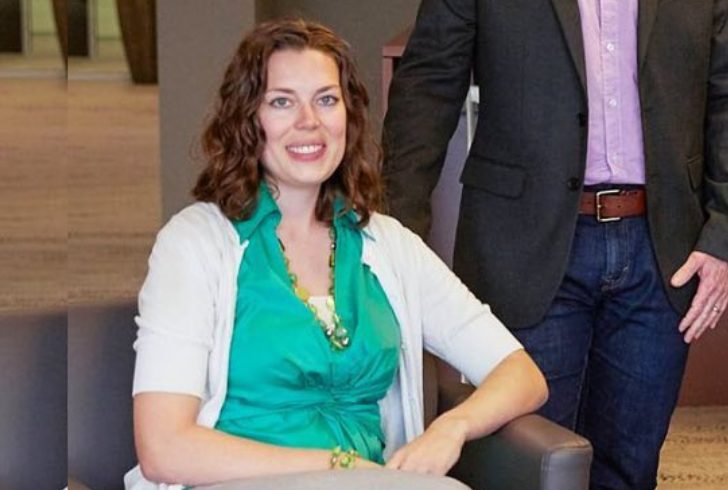For Michael and Christina Pirog, debt and saving often clash. From kitchen repairs to utilities, they rely on credit cards to cover household needs. Although they’ve managed to stay financially afloat, their real goal involves building an emergency fund and increasing retirement savings.
The couple, both 40, live in Long Valley, New Jersey, and bring in a combined $180,000 annually. With a firm plan and a few key adjustments, they can ease the debt burden and take control of their long-term financial future.
Balancing Income and Obligations
Michael works in pharmaceutical business development, and Christina teaches in a public school. Together, they juggle $14,000 across three credit cards—mostly on a 0% promotional-rate card—and another $15,000 on a personal loan with a 6.8% interest rate. On top of that, they carry $340,000 in mortgage debt at 4.125% and owe $45,000 in car loans with interest rates up to 7.6%.

Freepik | Michael and Christina's debt includes a $340k mortgage at 4.125% and $45k in car loans up to 7.6%.
Each month, the couple spends nearly $8,000. That includes:
1. $1,850 on their mortgage,
2. $1,100 in property taxes,
3. $1,000 for car payments,
4. $1,600 on groceries,
5. $600 for phone and utilities, and
6. $450 for gas, insurance, and other vehicle costs.
They also dedicate at least $900 to credit card and loan payments. Add in $3,000 annually for their 10-year-old son's sports and very limited restaurant outings, and the pressure mounts quickly.
Saving While Planning for Family Needs
Despite tight margins, the Pirogs prioritize saving. They’ve earmarked funds for a future vacation—Michael has a Disney trip set for 2026—and summer expenses when Christina doesn't draw a paycheck.
Michael contributes 10% of his salary to a 401(k), currently holding $51,000. His employer matches 3%. He also owns a Roth IRA with $32,000 but hasn’t added to it recently. Christina, meanwhile, sets aside 5% of her pay in a 403(b), now at $17,000, though her plan includes no employer match. She also contributes $360 per paycheck into New Jersey's teacher pension program. Their summer and vacation savings accounts total $12,000, but they lack a dedicated emergency fund.
For their son Miles, they’ve saved $33,000 in a 529 plan, supplemented occasionally by contributions from grandparents. Health insurance for the family is split between their workplaces, and both maintain life insurance coverage.
Despite their strategic efforts, Christina sums up the challenge well: “They say to spend what’s left after saving, but despite living within our means, that number is still becoming smaller and smaller.”
A Financial Advisor’s Take
Kerry Keihn, partner at Earth Equity Advisors in Asheville, North Carolina, applauds the couple’s discipline. She notes that their approach to debt—using promotional rates and consolidating loans—already puts them on solid ground. Still, there’s room for smarter strategies to enhance their progress.
One of Keihn’s first suggestions? Track every dollar. Using budgeting software can reduce decision fatigue, help identify leaks in their spending, and create clarity around where money goes each month.
Next, Keihn recommends moving savings to high-yield accounts. Right now, their summer fund earns a mere 0.02%. Platforms like Bankrate.com can help them find accounts offering significantly higher interest, often from online-only banks or credit unions.
Adjusting Retirement to Reduce Debt

Instagram | @greenbuiltorg | Advisor Kerry Keihn suggests smart steps like tracking every dollar and using better savings accounts.
While long-term saving remains critical, Keihn suggests temporarily scaling back retirement contributions. Michael can reduce his 401(k) contribution from 10% to 3%—just enough to keep the employer match. Christina should consider pausing her 5% 403(b) contribution for now, though she should confirm if re-enrollment is automatic when she resumes.
This shift would free up cash flow to prioritize debt repayment and emergency savings. Once they’ve eliminated high-interest debt and built an emergency buffer of at least three months’ expenses—around $25,000 to $50,000—they can confidently resume aggressive retirement saving.
Prioritizing Debt Repayment
Timing matters. Keihn urges the couple to tackle the credit cards first, particularly before the promotional interest rate expires in December. Eliminating credit card balances quickly prevents future interest charges. Once those are cleared, they should shift focus to the personal loan.
An emergency fund is also essential. Without one, unexpected expenses—like home repairs or medical bills—can quickly send them back into credit card debt. While building this fund may feel like a setback, it provides critical protection and long-term peace of mind.
Creating a Sustainable Future
The Pirogs already demonstrate financial discipline, and their commitment to saving for retirement and their son’s future speaks volumes. However, small shifts—like adjusting contributions temporarily, switching to high-interest savings, and using software to gain spending insights—can amplify their results.
By making these changes, they position themselves to erase debt faster, avoid future borrowing, and rebuild stronger savings habits. Once they reach those milestones, their plans for a brighter financial future—including that long-awaited Disney trip—will become far more achievable.
With smart adjustments and a bit of patience, Michael and Christina can create financial momentum. Paying down debt now paves the way for lasting savings. And with each strategic move, they inch closer to the freedom they’ve been working so hard to earn.


